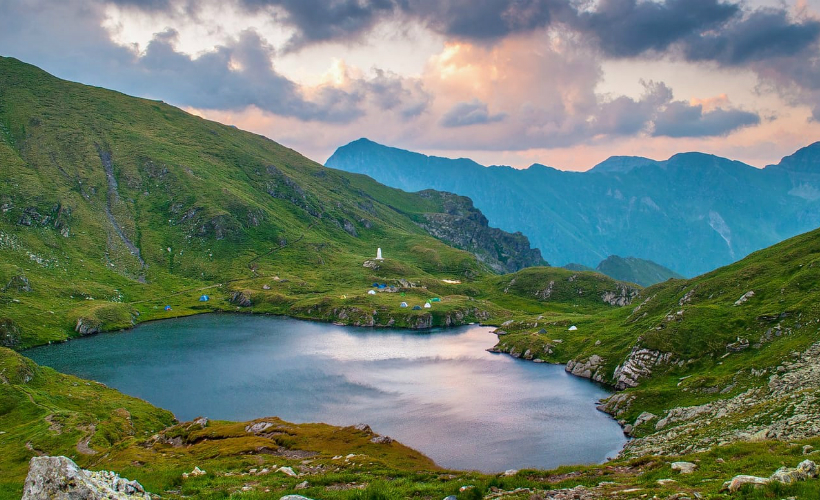
Fourteen seconds is all we got to click a few frames and run away from the racetrack as the bulls came charging at the victory line. A delay of even a second or two and we could have had the bull’s horns in our abdomens. And this was — not once — but each and every time; as the pair ran across the short stretch of some 120-140 metres. I am talking about the thrilling, nail-biting battle of the strongest and the fastest of the buffaloes and their masters — the Kambala buffalo race.
We chose to visit the Vijaya-Vikrama Kambala in the simple town of Uppinangdi, near Mangalore. This traditional sport has been happening for over thousand-years and is an annual event that takes centre-stage in small towns of Karnataka in the Dakshina Kannada, Udupi, and Kasargod districts. It’s the start of the harvesting season (between November & March) that the farmers want to run their buffaloes in the race.
Different beliefs engulf the origin of this race. Some believe Kambala began to please the gods for a good harvest. Other’s believe, that the buffalo races started as a sport as a source of amusement for the royal family. Some even associate a ritualistic aspect to Kambala as they believe that racing their buffaloes is akin to offering gratitude for protecting them from diseases. Regardless of which is true, Kambala is a traditional Tulu Nadu sport that helps in communicating the culture of the region. It is not a mere game, but a significant tradition for them, highlighting the farmer’s emotional bond to the local land and agriculture.

That morning at the Kambala grounds was an exuberant one in the air as the locals eagerly awaited the race to start. It’s a recreation for the farming community and their families. It seemed well rehearsed, systematic, and run so effortlessly. Sponsored by the local Tuluva landlords and households in Dakshina Kannada and Udupi, there was a prevailing aura of joy among the racers, their teams, the crowd, and the organisers. Locals and photographers thronged the place; college students skipped their classes. Everything ran like clockwork.
The racetrack for this sport is slushy paddy fields filled with water, but well curated and maintained. Farmers from neighbouring towns form their own teams and come dressed in vibrant colour. Buffaloes are well-fed, dressed in colourful headgear, oiled, and prepared by their masters and brought in with style.
They are introduced to the race track and led in like VIP. The team walks with the bulls over to the other side, through the slushy tracks, as the rest of their team shout slogans.

The masters follow the bulls onto the track. They are nothing short of well-trained athletes. With bodies of steel, masters run as fast — if not faster than — the bulls. Watching them speed past me, I gathered that these games also helped in the personality development of an individual.
Each team has a squad of people to take care of the buffaloes. But, one of them is chosen to be the runner. He is the fittest, strongest, and most importantly, the bravest one to run alongside the buffaloes.
To me, the runners were like trained Olympic athletes. Their mental frame was in a different league. How else could one drive the buffaloes with their whips and run through the slushy fields at the same time? And that too within a window of 14 seconds? Watching them made me wonder about who was stronger — the bulls or their masters?

As the whips lash at the bulls, they get aggressive and gain speed, as if they were chased by a tornado. Apart from the time taken by the pair of buffaloes to complete the run, the other parameter used in deciding the winner is the height of the water splashed in the air. They are markings for 5.5 feet, 6.5 feet, and 7.5 feet in the form of banners tied along the track, with embedded sensors measuring the water levels reached.
The atmosphere at the tracks got intense with time, with explosive expressions and belligerence as the racers made their way down the track. At the finish line, the teams waited with bated breath to see if their buffaloes made time. There was tension in the air.
What used to be a traditional non-competitive sport, where a pair of buffaloes were made to run one by one, is today a contest between two pairs of buffaloes. The rewards have undergone a steep transformation too.

Once they are out of the race, both buffaloes and runners are splashed with water by their team. It’s the best way to cool off, given the heat built up in a short span.
Some of the unforgettable sights are the water splashes emerging from the race tracks. The slush, the speed, the colour of the mud combined with ambient lights at night. Light from the rising and setting hours of the sun made for breathtaking splashes of golden yellow. Just like the winning team takes away their grand prize in the form of gold coins, I had my own prize too, in the form of this adrenaline-boosting spectacle. My reward was getting drenched from head to toe by the splashing mud as I stood by the track. Every moment — even as I turned my back to the track in an attempt to save my camera — was one to savour.
*All photos by the author.
![India’s Most Colourful Cities [VIDEO]](https://zafigo.com/wp-content/uploads/2019/03/bada-bagh-3181803_1920.jpg)

